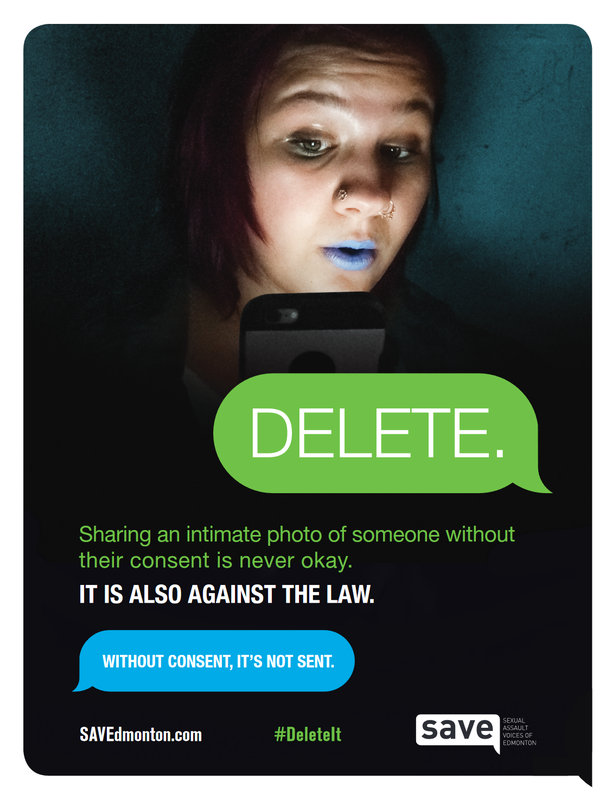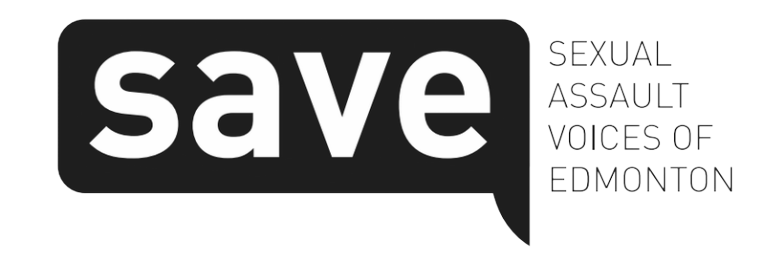
Non-Consensual Photo Sharing
With our Delete It campaign, SAVE aims to expand the public’s understanding of consent and emphasize that these standards of consent apply to any and all sexual activity, whether it’s happening face to face, or via technology.
In today’s digital age, more and more of the average person’s life is mediated through the use of technology. Many people use technology to work, maintain relationships, get news and entertainment, and even meet romantic partners. Just like every other aspect of our lives has expanded to include a digital component, it is inevitable that romantic and sexual relationships would expand in this way also. Sexual experimentation facilitated through technology often centers on the exchange of intimate photos, videos or messages and is typically referred to as “sexting”.
As technology becomes an increasingly common site for sexual experimentation, we are also seeing a disturbing and pervasive trend in which people use technology to enact sexual violence by sharing intimate photos of individuals (typically girls, women or queer youth) without their consent. This includes situations where a photo or video is sent consensually to select persons with the understanding that it will be kept private (perhaps in the context of a relationship), and is then circulated further without consent, as well as situations where a photo or video is taken and shared without having that individual’s consent in the first place (perhaps when the victim is unconscious or incapacitated).
INTRODUCING CONSENT TO THE ISSUE
SAVE believes that non-consensual photo sharing is a serious form of sexual violence. SAVE wants to challenge these victim blaming attitudes by introducing consent education to this issue, and putting the responsibility where it belongs – on the people choosing to perpetrate sexual violence by sharing photos without consent.
If the standards of consent listed below under ‘Non-Consensual Photo Sharing and the Law’ apply to sexual contact happening face to face, they absolutely apply to sexual contact happening via technology. Any type of sexual activity without consent is sexual violence, plain and simple.
Just like consenting to a particular type of sexual activity with a particular person does not imply that individual has consented to sexual activity with a different person, choosing to consensually share a photo with a particular person does not mean she has consented to sharing that photo with others. Similarly if someone cannot consent to sexual activity when they are passed out or incapacitated, they can also not consent to having intimate photos or videos taken under those circumstances. And just like pressuring, guilting, threatening or otherwise coercing an individual into sexual activity is sexually abusive; coercing someone, including a partner, into sending sexting photos or videos is sexual violence too.
IMPACT OF NON-CONSENSUAL PHOTO SHARING
The consequences of this type of violence are devastating. The level of harassment, abuse and victim blaming directed towards individuals who have had their boundaries crossed in this way is extreme. Victims often receive little or no support, are told they should have known better and should not have sent that photo in the first place, or, if the photo was taken without their consent, told they should not have put themselves in such a vulnerable position. It is not uncommon for victims of this type of violence to move schools or towns to escape the abuse, or develop mental health concerns like anxiety, depression or even suicidality.
NON-CONSENSUAL PHOTO SHARING AND THE LAW
In addition to violating consent law, circulating intimate photos without consent is also addressed in two other sections of the Canadian Criminal Code:
Child Pornography Law
When intimate photos are shared of minors (someone under the age of 18) without consent, child pornography laws may also come into effect.
Child Pornography is defined as any photo, image, or video of someone who is (or is depicted as being) under the age of 18 and appears to be engaging in sexual activity or is depicted in a sexually explicit way. People can be charged with producing, possessing, accessing or distributing child pornography.
Child pornography laws have been used in cases where youth have distributed intimate photos of other youth without consent. This a very serious charge for a young person to face and youth must know their legal rights and responsibilities.
What about consensual “sexting”?
There is much confusion around the public’s understanding of how child pornography laws relate to youth exchanging intimate photos. Many people mistakenly believe that youth who are consensually taking or sharing intimate photos are breaking child pornography laws. Truthfully, our child pornography laws are not designed to criminalize consensual behaviors between youth. They are meant to protect children and youth from exploitation by adults.
In 2001 the Supreme Court of Canada decided that young people have a right to express themselves sexually by creating and sharing intimate images of themselves AS LONG AS:
- It is 100% consensual
- The images are not distributed further without consent
- There is no physical or sexual assault or abuse depicted in the image or video
However, the moment someone takes, looks at, stores, or shares an intimate photo of a youth without consent, they could be considered producing, accessing, possessing or distributing child pornography.
NON-CONSENSUAL PHOTO SHARING RESOURCES
Cybertip.ca
This website is operated by the Canadian Centre for Child Protection. This website has information on reporting and has more information on thesteps you can take if you are concerned that your own sexual or intimate photos have been shared non-consensually.
Canadian Red Cross Respect Education
Phone: 780-423-2680
The Canadian Red Cross Respect Education program offers in-person and online workshops and training for youth and adults in schools and communities to explore their rights and responsibilities, types of violence, and elements of prevention.
Kids Help Phone
24-Hour Crisis Line: 1-800-668-6868
A free and anonymous service supporting young people as they build the skills to improve their emotional health and well-being. Their website has a wide selection of resources about sending and receiving sexual messages over some form of technology, including: privacy and technology,
‘sexting’ and the law, and information on consent. This information is geared both towards teens and individuals who work with youth.
Need Help Now
This website provides comprehensive information on what to do and where to go after a youth has had their photos shared, and also provides a section for adults who are supporting youth through this experience.
